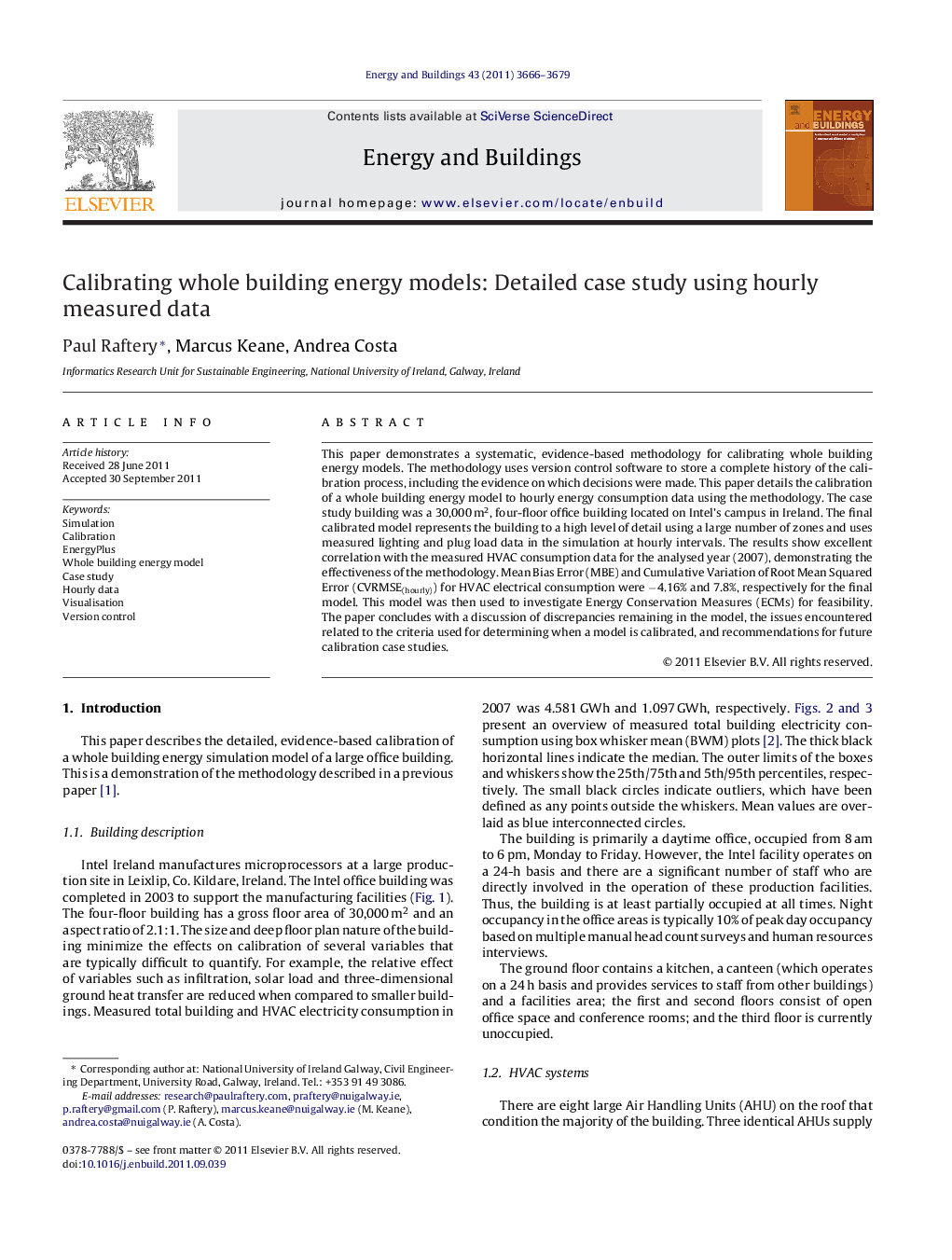| Article ID | Journal | Published Year | Pages | File Type |
|---|---|---|---|---|
| 264234 | Energy and Buildings | 2011 | 14 Pages |
This paper demonstrates a systematic, evidence-based methodology for calibrating whole building energy models. The methodology uses version control software to store a complete history of the calibration process, including the evidence on which decisions were made. This paper details the calibration of a whole building energy model to hourly energy consumption data using the methodology. The case study building was a 30,000 m2, four-floor office building located on Intel's campus in Ireland. The final calibrated model represents the building to a high level of detail using a large number of zones and uses measured lighting and plug load data in the simulation at hourly intervals. The results show excellent correlation with the measured HVAC consumption data for the analysed year (2007), demonstrating the effectiveness of the methodology. Mean Bias Error (MBE) and Cumulative Variation of Root Mean Squared Error (CVRMSE(hourly)) for HVAC electrical consumption were −4.16% and 7.8%, respectively for the final model. This model was then used to investigate Energy Conservation Measures (ECMs) for feasibility. The paper concludes with a discussion of discrepancies remaining in the model, the issues encountered related to the criteria used for determining when a model is calibrated, and recommendations for future calibration case studies.
► Evidence-based methodology for calibrating whole building energy models. ► Case study of large office building using hourly measured data for 2007 and 2008. ► Model uses measured lighting and plug loads at hourly intervals. ► Recommends to include zone temperature comparison in acceptance criteria.
